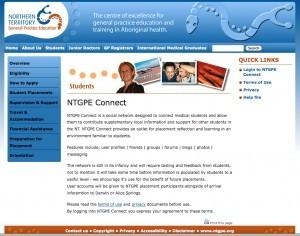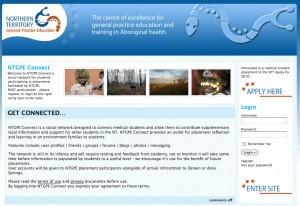By Sian Claire Owen
 For medical students developing empathy is important, particularly in cross-cultural environments such as the Northern Territory in Australia. Perhaps in this context, Web 2.0 technologies in education really can come into their own.
For medical students developing empathy is important, particularly in cross-cultural environments such as the Northern Territory in Australia. Perhaps in this context, Web 2.0 technologies in education really can come into their own.
Dr Hung The Nguyen is the Director of Medical Education at the Northern Territory General Practice Education in Australia. This remote area covers 1,139,129 km2 and has a population of approximately 200,000 people.
During the Web 2.0 in Education session at the 2nd International Conference on Virtual Patients and Annual MedBiquitous Meeting, Dr The Nguyen described how they have used Web 2.0 technologies to promote learning, and publish and share content easily over large distances during cultural immersion.
Cultural immersion is not a new concept, however Web 2.0 has enabled the students to analyse and reflect on their activities, and share their experiences and resources with other students.
“Cultural immersion is basically putting someone from a given culture – in this case medical students – into a situation that is very different to what they have experienced,” he said.
“Added to that, to ensure learning happens it needs to be a planned process,” he explained. “There need to be guides and activities that allow the students to self-reflect, and to discuss their reflection with their peers as well as their teachers.”
 With their cultural immersion programme, students are placed in remote indigenous communities. They are then given access to the NTGPEConnect website – a central online portal and social networking tool for participating students.
With their cultural immersion programme, students are placed in remote indigenous communities. They are then given access to the NTGPEConnect website – a central online portal and social networking tool for participating students.
“We did a bit of research on how to use this technology,” said Dr The Nguyen, “Especially because in the Northern Territory we’ve got a lot of big space. Students are dispersed quite widely.”
“We needed, somehow, to connect them together. We do teleconference, but we wanted to take it a little bit further.”
“It seems that using Web 2.0 is the way to go,” he added. “We reached out quite a bit, and we know our learners are very used to the technology and we tailored it to the needs of cultural immersion.”
Dr The Nguyen and colleagues chose not to create a public social networking account, in order to prevent the publication of sensitive information about the Aboriginal communities and cultures, and the students personal experiences. It was deemed appropriate to monitor and remove inappropriate material.
However, students are provided with student profiles, community profiles and various resources including photographs of their experiences.
So do they benefit from these online resources? “The evaluation we had recently shows that overall, students rank NTGPEConnect highly. It is an acceptable tool for students to communicate with each other and with us, and for them to leave resources for each other.”
“We wanted the students not to feel alone, and to collaborate with each other, and a lot of the stuff that they put on NTGPEConnect is their thoughts and feelings, and their tips for each other. So it’s really good.”
You can listen to Hung The Nguyen talk about Web 2.0 and Cultural Immersion here:
